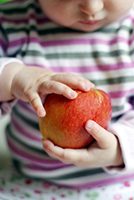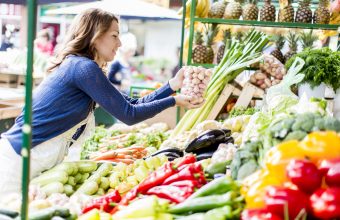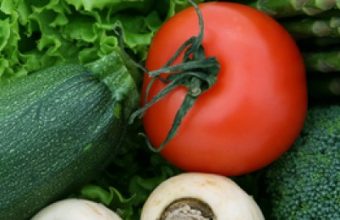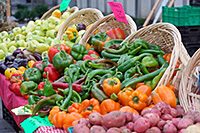It’s tough to get through the grocery store these days. Organic or not? Farm raised? Local? Packed in plastic? Flown in from Argentina? Full of salt? Full of sugar? You forgot your BAG? A screaming toddler is the least of your worries.
We’re not experts with a Ph.D. in food science but one thing we’re feeling pretty confident about is that pesticides are not something we want to ingest and we certainly don’t want our developing children to ingest them from our beloved F&V (fruits and veggies).
So to make it easy for us moms, the Environmental Working Group came out with lists of the best and worst fruits and veggies to buy for your family (from a pesticide level perspective, of course). They are called the Dirty Dozen and the Clean 15 and we’ve got them here for you as well. You can even download the list onto your iPhone or keep a PDF of it with you for shopping reference here.
What’s the word? Well, sadly fruits beat out veggies with seven of the 12 items in the ‘Dirty Dozen’ listed as fruits. These seven were listed in order of severity: peaches, apples, nectarines and strawberries, cherries, imported grapes, and pears. The rest of the dirty gang is made up of some of our fave veggies: sweet bell peppers, celery, kale, lettuce, and carrots are the vegetables most likely to expose consumers to pesticides (in the same order).
But there is good news that comes with the Clean 15, listing ones most likely to have low pesticide counts. The vegetables are onions, sweet corn, asparagus, sweet peas, cabbage, eggplant, broccoli, tomatoes, and sweet potatoes. The fruits least likely to have pesticide residues on them are avocados, pineapples, mangoes, kiwi, papayas, and watermelon.
So what is a mom to do?
- When you are shopping, keep a quick reference of the ‘dirty dozen’ list handy to help you make informed choices.
- Wash your F&V very well (all of them). We like to soak our produce in a solution of cold water and cider vinegar (1 Tbsp vinegar per litre of water) for 5–10 minutes and then rinse well before eating.
- Eat local produce whenever possible and buy directly from the farmer if you can. There are plenty of local farmers’ markets around the city that are now open and many of them sell organic produce.
Isn’t it nice to know there are some markets you can count on these days to produce real fruits of labour?
Tagged under: Organic,pesticides,vegetables,fruits,green living
Category: green-living






